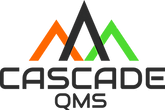Increasingly so, we’re asked: What is COR certification? Our consultants typically answer that question with another question, “How did you hear of it?” Seeking the source is not only the best place to begin explaining COR Certification but also a bit of market research, to be honest. More and more of our US based clients are being asked if they carry COR Certification, without international intentions. The frequency of these requests is revealing an amazing opportunity. COR Certification may be a wonderful tool.
What is COR Certification?
The Certificate of Recognition (COR) certification program is a recognized standard for workplace health and safety management in Canada. It is designed to help organizations establish and maintain adequate health and safety programs, reduce workplace accidents and incidents, and improve overall safety performance. The COR program is typically administered at the provincial level in Canada, and the specific requirements and processes may vary from one province to another.
The COR Process
The process can be broken down into significant parts. Here are the critical components of the COR certification program:
Establishing Safety Management Systems: To obtain COR certification, an organization must develop and implement a safety management system that complies with established safety standards. This system includes written policies and procedures for health and safety, hazard identification and assessment, incident reporting and investigation, employee training, and more.
Training and Education: Employees and management must undergo safety training and education to ensure they know best practices and can effectively contribute to a safer workplace.
Hazard Assessment: Organizations must regularly identify and assess workplace hazards. This process involves identifying potential risks, evaluating their severity, and implementing measures to control or eliminate them.
Safety Audits and Assessments: The cornerstone of the COR program is the safety audit. An independent, certified auditor conducts a comprehensive evaluation of the organization’s safety management system. The audit assesses the organization’s compliance with safety standards and identifies areas for improvement.
Audit Process: During the audit, the organization provides documentation and evidence of its safety management practices, policies, and procedures. The auditor reviews this information, interviews employees, and inspects the workplace to determine if the organization meets the safety standards.
Certification: If the organization successfully passes the audit and meets the required safety standards, it receives a Certificate of Recognition (COR) from the relevant provincial authority. This certificate signifies that the organization has a well-implemented safety management system.
Ongoing Maintenance: To maintain COR certification, organizations typically undergo regular safety audits, usually every one to three years. These audits help ensure that the organization continues to meet safety standards and maintain a strong safety culture.
COR certification is often associated with benefits such as reduced workers’ compensation premiums, improved safety performance, and a competitive advantage in business operations. Furthermore, the specific requirements and regulations for COR certification can vary by province in Canada, so organizations should check with their provincial safety authority for detailed information and guidance on the program.
Is COR Certification a good fit for your business?
COR (Certificate of Recognition) certification is valuable for a diverse array of companies and organizations, especially those with a strong emphasis on workplace health and safety. Among the industries where it finds the most relevance are construction and contracting firms, where the risks associated with hazardous environments and workplace accidents are high. Manufacturing companies also benefit, given the complex machinery and materials they handle. In the oil and gas sector, known for its unique safety challenges, COR certification is essential for maintaining rigorous safety standards. Transportation and logistics companies can significantly improve safety on the road and within their facilities.
Similarly, agriculture, forestry, and farming operations, which often involve machinery, chemicals, and livestock, find value in COR certification to mitigate potential risks. Utility and energy companies, municipal governments, healthcare facilities, waste management, and recycling organizations can enhance safety measures and protect their workforce. Even in the retail and service sectors, where risk might not be as readily apparent, COR certification aids in safeguarding employees and customers, particularly in settings like warehouses and distribution centers. Furthermore, non-profit and community organizations can use COR certification to prioritize safety during events and activities. In essence, COR certification is a versatile tool for fostering safety in organizations across various sectors, offering a structured approach to safety management that adapts to specific industry risks and hazards.
Benefits of COR Certification
Obtaining a Certificate of Recognition (COR) certification in workplace health and safety in Canada can offer several benefits to organizations. These benefits may vary by province and industry, but they generally include:
Reduced Workplace Accidents: One of the primary benefits of COR certification is reducing workplace accidents and incidents. By implementing and maintaining a robust safety management system, organizations can prevent injuries and illnesses among their employees, leading to a safer work environment.
Lower Workers’ Compensation Costs: Many provinces in Canada offer financial incentives to COR-certified organizations, such as reduced workers’ compensation premiums. These cost savings can be significant and contribute to the organization’s overall financial health.
Improved Reputation: COR certification is a recognized standard for workplace safety. Displaying the COR logo or indicating COR certification in marketing and business materials can enhance an organization’s reputation and demonstrate a commitment to safety to clients, partners, and the public.
Competitive Advantage: Having COR certification can give organizations a competitive edge in the market. It may make them more attractive to clients, suppliers, and potential business partners who value safety and seek to work with responsible and safe companies.
Legal Compliance: COR certification helps organizations comply with safety regulations and standards, reducing the risk of legal and regulatory issues related to workplace safety.
Employee Morale and Retention: A safe and healthy workplace can boost employee morale and job satisfaction. Employees are more likely to stay with an organization that prioritizes their well-being.
Reduced Downtime and Costs: Fewer accidents and injuries mean reduced downtime and costs associated with incidents, including medical expenses, insurance claims, and productivity losses.
Improved Productivity: A safer workplace tends to be a more efficient one. Employees can focus on their tasks without safety concerns, leading to increased productivity.
Access to Contracts: In some industries, COR certification is a requirement to bid on or secure specific contracts or projects, especially in the construction, oil and gas, and manufacturing sectors.
Commitment to Sustainability: Demonstrating a commitment to safety and health aligns with sustainability goals and corporate social responsibility initiatives.
It’s important to note that the specific benefits of COR certification may vary by province and industry. Organizations considering COR certification should check with their provincial safety authority for detailed information on the program’s benefits and requirements, as well as any financial incentives or discounts associated with certification.
Steps to becoming COR certified
Becoming COR (Certificate of Recognition) certified can vary depending on the province in Canada and the specific industry. However, there are some general steps to follow:
Step 1: Commitment and Leadership
Leadership commitment: Ensure that senior management is committed to improving workplace health and safety and is willing to allocate the necessary resources.
Appoint a Health and Safety Coordinator:
Designate an individual or a team responsible for managing the COR certification process.
Safety Management System (SMS) Development:
Develop and implement a comprehensive Safety Management System (SMS) that aligns with industry standards and regulatory requirements. Create written health and safety policies, procedures, and practices that address hazard identification, risk assessment, incident reporting, and more.
Step 2: Safety Training
Establish employee training programs on safety procedures and best practices. Cascade QMS can help!
Hazard Assessment:
Regularly identify, assess, and control workplace hazards. This may include risk assessments, safety inspections, and job hazard analyses.
Employee Involvement:
Involve employees in the safety process by encouraging them to report hazards, participate in safety meetings, and provide feedback on safety procedures.
Step 3: Audit
The COR certification audit is vital and requires much attention, preparation and evaluation. This process can be broken down as follows:
Pre-Audit Preparation:
Gather and organize all relevant safety documentation, including policies, procedures, training records, incident reports, etc.
Select an Auditor:
Choose an accredited and certified auditor qualified to conduct the COR audit. The relevant provincial authority must approve auditors.
Safety Audit:
The chosen auditor will conduct a thorough on-site safety audit of your organization. During the audit, they will assess your SMS and its implementation, interview employees, inspect the workplace, and review documentation.
Audit Evaluation:
The auditor will evaluate your organization’s safety management system and assess its compliance with the COR program requirements.
Corrective Actions:
If the audit reveals deficiencies or non-compliance, you will be given a list of corrective actions to address these issues.
Final Audit:
After implementing corrective actions, request a final audit to demonstrate that the identified issues have been resolved and that your organization now meets the COR requirements.
Step 4: COR Certification Complete
If your organization successfully passes the final audit and meets the required safety standards, you will receive your Certificate of Recognition (COR) from the provincial authority.
Ongoing Maintenance:
To maintain your COR certification, your organization may be required to undergo regular maintenance audits, which typically occur every one to three years.
It’s crucial to consult with your specific provincial safety authority to understand the detailed requirements and processes for COR certification in your region. They can provide the most up-to-date and accurate information about the program and help guide you through the certification process. Cascade QMS Consultants are also on standby to assist.
Cost of COR Certification
The cost of achieving COR (Certificate of Recognition) certification can fluctuate depending on various factors. These factors include the size of your organization, the industry in which you operate, and your geographical location. An essential expense is the fees associated with hiring a certified and accredited auditor to perform the initial COR audit. The cost of auditor services can vary, influenced by the complexity and scope of the audit required for your organization. Additionally, if your organization lacks a comprehensive safety management system (SMS), expenses may be tied to developing policies, procedures, and safety practices that align with COR requirements. Costs related to training employees and management on safety protocols should also be factored in. In cases where the audit identifies deficiencies, expenses will arise for corrective actions to rectify these issues.
Furthermore, sustaining COR certification involves ongoing costs, including regular maintenance audits to ensure your certification remains valid. Remember that administrative expenses and potential travel costs may be incurred during the certification process. While there are costs associated with COR certification, it’s essential to consider the long-term benefits, such as potential savings on workers’ compensation premiums and enhanced workplace safety, as they can outweigh the initial expenses. To obtain a more accurate estimate of the costs tailored to your organization’s specific circumstances, it’s advisable to consult with your provincial safety authority or a certified COR auditor. Cascade QMS can provide detailed information and guidance on the expenses of obtaining COR certification.
Marketing COR Certification
Becoming COR certified is not only an additional precautionary measure to safeguard your most precious assets (employees, of course), it’s a means to market! Many large corporations seek vendors that hold international certifications, such as COR and ISO 45001, to hire. Additionally, having COR certification is a seal of your dedication to a severe safety culture marketable in vetting systems such as ISNetworld®, Avetta®, Vero®, and many others. Cascade QMS would love to discuss your business options and help you navigate those tricky prequalification forms. Call Cascade QMS today and discuss broadening your sales horizons!


